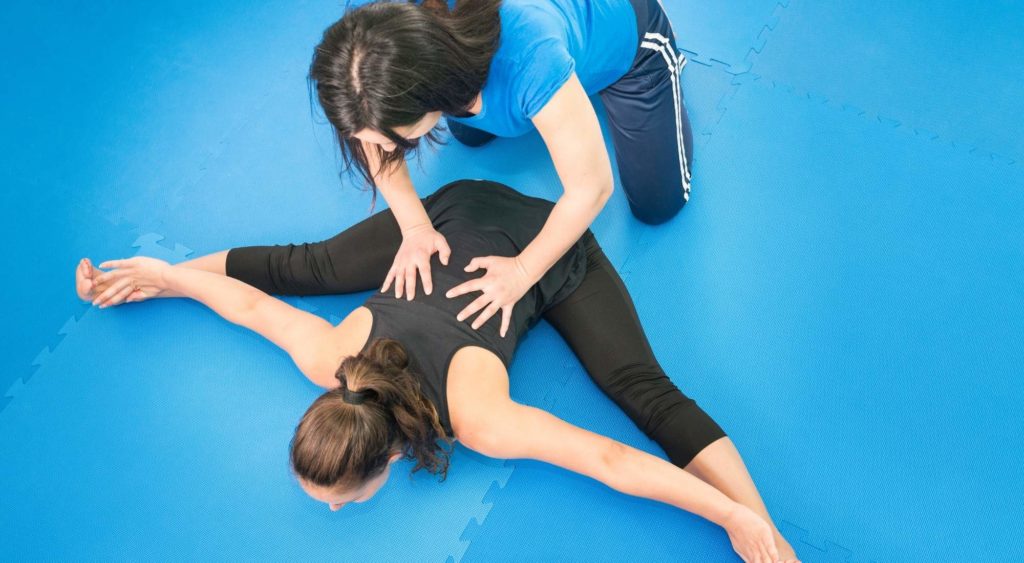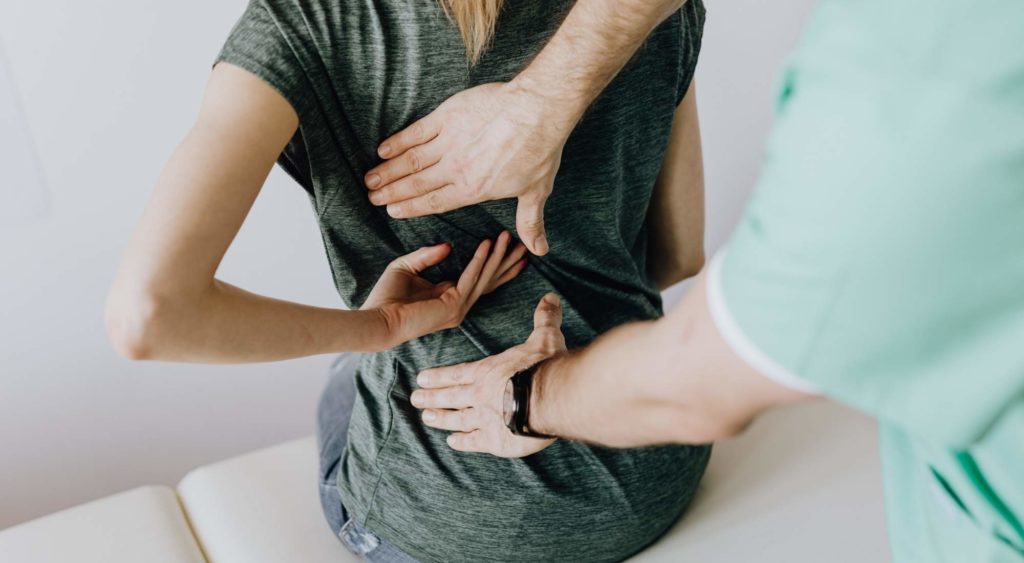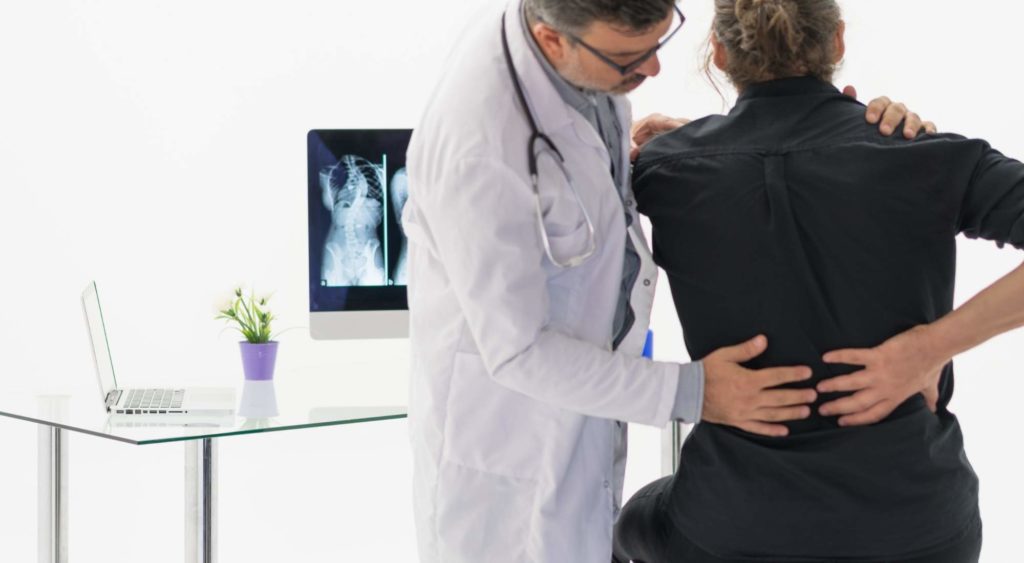
There it is again, that pain shooting down your back.
Now you’re doubled over in discomfort, wondering if it’s time to call the doctor or if rest is all you need.
But how can you know if the pain is muscle soreness or from an injury?
The answer can determine your best course of action for recovery.
Thankfully, there are ways to differentiate between soreness and injury.
In this guide, you’ll find the answers to questions like “am I injured or just sore?” and learn ways that physical therapy can help with both soreness and injuries.
Table of Contents
- How Do You Know if You Injured Your Back or if You’re Sore?
- Back Soreness vs. Pain From an Injury: 4 Questions to Ask Yourself to Help Distinguish the Difference
- 3 Signs Your Back Pain May Be Due to Injury
- Can Physical Therapy Help With Back Soreness and Injuries?
- Asking Yourself “Am I Injured or Just Sore?” The Team of Physical Therapists at In Motion O.C. Can Help You Distinguish and Overcome Your Soreness or Injuries

How Do You Know if You Injured Your Back or if You’re Sore?
Whether you’re lifting heavy weights or just performing simple household tasks, millions of people suffer from back pain every day.
How do you know if you injured your back or if you’re sore?
Soreness usually goes away quickly and doesn’t come back frequently.
Pain from an injury may or may not feel severe, but it affects your quality of life, limiting your ability to function normally.
Keep reading to find four important questions to ask yourself when asking your lower back sore or injured.
Back Soreness vs. Pain From an Injury: 4 Questions to Ask Yourself to Help Distinguish the Difference
#1: When Did Your Back Pain Start?
Did the back pain start after you’ve rested for 12-24 hours following a strenuous activity or workout?
Or did you experience pain at the onset of the activity or during?
After performing a movement that adds strain to the back, it’s normal to feel some soreness after a day or so.
Pain at the onset of the activity or during the activity is typically your body alerting you to an injury.
#2: What Does Your Pain Feel Like?
Back pain can be relative, even varying between two people with the same cause. That’s why it’s important to understand how to describe your personal experience with back pain.
Innocent soreness usually feels …
- Achy
- Stiff; and/or
- Tight
… whereas an injury can cause pain that is:
- Sharp
- Shooting; or
- Radiating
#3: How Long Does Your Pain Last?
Similar to a tough arm or leg workout, additional weight and uncommon movements targeting back muscles will cause soreness.
This type of pain, referred to as acute pain, should subside quickly and not return.
Acute pain can last a day up to four weeks and should heal on its own.
Chronic pain caused by an injury typically won’t ease up after a few days. It returns frequently and you can’t pinpoint the reason why.
Chronic pain typically lasts 12 weeks or longer and interferes with everyday life.
In this video, we’ve detailed how to identify the difference between soreness and pain caused by injury.
If you need medical attention, the experts at In Motion O.C. are here to help. With the extensive knowledge and experience to pinpoint the source of your pain, we also equip you with the tools necessary to support you in a swift recovery.
#4: Where Do You Feel Pain?
Is the pain targeted in one region of your back?
Are the painful sensations localized in your joints or muscles?
Does the pain radiate to other parts of your body?
Before we answer these questions, let’s get a better understanding of the different areas of the back.
The spine is made of a vertebral column divided into five different regions corresponding to the natural S-shaped curvature of the spine from top to bottom:
- Cervical spine: 7 vertebrae (C1–C7)
- Thoracic spine: 12 vertebrae (T1–T12)
- Lumbar spine: 5 vertebrae (L1–L5)
- Sacrum: 5 (fused) vertebrae (S1–S5)
- Coccyx: 4 (3–5) (fused) vertebrae (Tailbone)
The vertebral column is held together by joint capsules, ligaments, tendons, and muscles.
The thoracic spine or upper back region is more likely to be caused by a serious underlying condition when compared with other regions of the back. This portion of the spine is connected to the ribs protecting your heart and lungs.
Damage to the thoracic vertebrae can be serious, so don’t hesitate to see a doctor.
Symptoms of middle back pain that occur above the lumbar region of the spine but below the rib cage, can be vague and difficult to pinpoint.
The lower back or lumbar region is the most commonly affected area for back pain or injury.
Unsuspecting elements that can cause lower back pain include:
- Pregnancy
- Weight gain/obesity
- Lack of physical activity
- Stress and anxiety
- Smoking
Pain confined to one area of your back, also called axial pain, is most commonly caused by muscle strain and facet joint problems.
Referred pain that tends to move around can be caused by more serious illnesses like degenerative disk disease in which pain originates in the lower back and then moves to the hips.
Radicular pain often referred to as sciatica, can be caused by injuries like a herniated disc. Radicular pain feels like a sharp sensation shooting down the spine and may travel into the leg.

3 Signs Your Back Pain May Be Due to Injury
It’s important to identify the type, length, and location of your pain to determine if your pain may be due to injury.
Most importantly, if you find yourself coping with debilitating or aching pain that lingers, it may be time to see a doctor or physical therapist.
If you haven’t recently done activities that may have caused back pain, it may not be due to an injury, but rather a serious condition.
Still unsure? Here are three signs it may be time to make an appointment.
#1: Swelling
If you’re under the age of 35 and suffer from a stiffness that radiates to the buttocks when you wake or after a period of inactivity, your pain may be caused by an inflammatory disease called spondyloarthropathies or spondyloarthritis.
Spondyloarthropathies is associated with inflammatory bowel disease. It most often affects the spine, but can also affect the hands, feet, arms, and legs.
If you suspect your back pain may be due to inflammation or swelling, you must see a rheumatology expert.
#2: Inability to Stand or Walk
Spinal stenosis is a condition increasingly common with age that makes it difficult to stand or walk.
Gravity pulls the vertebrae closer over time as the discs between them dry out and become thinner. With a diminishing cushion between the vertebrae, they rub against each other causing arthritis.
Spinal stenosis is a chronic condition that must be managed through a healthcare provider so do not wait to schedule an appointment.
#3: Unable to Do Everyday Tasks
As suggested in the video, it is critical to monitor your pain and make an appointment the moment you find yourself unable to perform everyday tasks.
Back pain is considered severe once it alters your quality of life and hinders normal functionality.

Can Physical Therapy Help With Back Soreness and Injuries?
Absolutely.
Physical therapy can help with back soreness and injuries in several ways including:
- Teach proper posture and ergonomics
- Correct body mechanics
- Train manual therapy techniques
- Identify root causes of the back pain
- Develop protective movements
- Assist in muscle and soft tissue healing
Asking Yourself “Am I Injured or Just Sore?” The Team of Physical Therapists at In Motion O.C. Can Help You Distinguish and Overcome Your Soreness or Injuries
Are you still unsure if you’re injured or just sore?
The team of licensed physical therapists at In Motion O.C. can help you distinguish and overcome your soreness or injuries. From investigating the root cause to implementing the proper body mechanics of ordinary movements, In Motion O.C. is the link you need from recovery to prevention of future injury.



